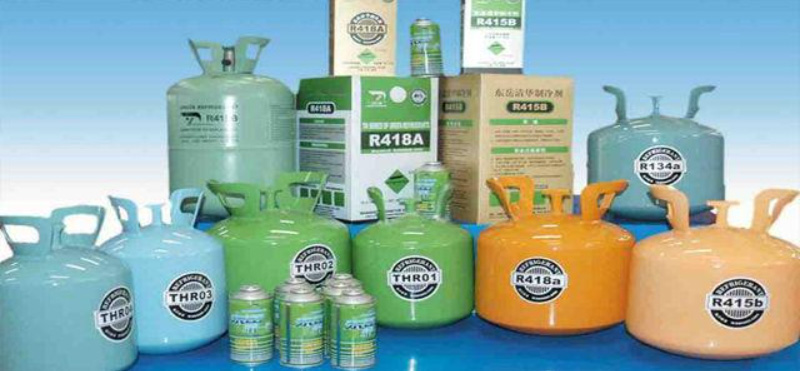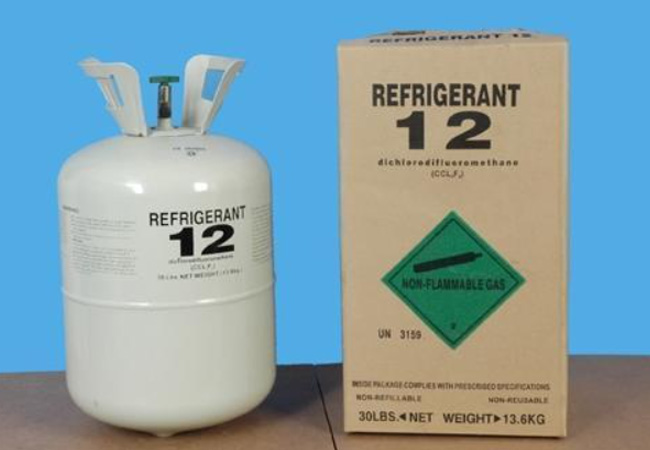How are all kinds of refrigerants numbered and named?
There are many kinds of refrigerants, such as R134a (automotive air conditioning refrigerant), R22 (cold storage, household refrigerant), etc. What is the meaning of "R"? What is the naming rule of refrigerant number? Next, Professor of refrigeration will give you specific answers to the relevant knowledge of refrigerant label, and let's look down together.
According to the international standard ISO 817-197 "organic refrigerants - numeral symbols", the simple numbering method of various general refrigerants is specified instead of using their chemical name, molecular formula or trade name. The use of chemical name and molecular formula does not exclude the use of refrigerant number expression method specified in this standard.
1. For the halogenated hydrocarbons and hydrocarbons of methane, ethane, propane and cyclobutane series, the specified identification number shall enable the structure of the compounds to be deduced from the number of refrigerants without ambiguity.
The first number from right to left is the number of fluorine (F) atoms in the compound.
The second digit from right to left is the number of hydrogen (H) atoms plus one in the compound.
The third number from right to left is the number of carbon (C) atoms in the compound minus one. When the number is zero, it is omitted.
The number of chlorine (CL) atoms in a compound is obtained by subtracting the sum of the number of fluorine (f) and hydrogen (H) atoms from the total number of atoms that can combine with carbon (c). When there is only one carbon atom in a saturated compound, the total number of connected atoms is 4. When there are two carbon atoms, the total number of connected atoms is 6. If the compound is not saturated, the total number of connected atoms is 4.
2. For saturated refrigerants, the total number of atoms connected is as follows:
When C = 1, it is equal to 4;
When C = 2, it is equal to 6;
......
When C = n, it is equal to 2n2
For single unsaturated and cyclic sum refrigerants, the total number of atoms connected is as follows:
When C = 2, it is equal to 4;
When C = 3, it is equal to 6
When C = n, it is equal to 2n
Cyclic derivatives, using the letter C before the refrigerant identification number
In the case that bromine partially or completely replaces chlorine, the same rule is still adopted, but the existence of bromine (BR) since the letter B is added after the identification number of the original chlorine fluorine compound, and the number after the letter B indicates the number of bromine atoms.
Ethane series isomers all have the same number, but the most symmetrical one is indicated by the number without any letters. As the isomers become more and more asymmetric, letters such as a, B and C should be added. Symmetry is the sum of the atomic weights of the clusters connected to each carbon atom, and is determined by the difference between the sum of one atomic weight and the sum of the other. The smaller the difference, the more symmetrical the product will be.
The above rules are also applied to ethylene isomers, but the number 1 is used as the fourth digit from right to left for alkenes.
2. Non azeotropic mixture and azeotropic mixture are represented by refrigerant number and mass ratio of composition. Refrigerants should be marked according to the increasing order of the standard boiling points of their components. For example, when the refrigerant R22 and R12 are mixed by 90 / 10 mass percent, it can be expressed as R22 / R12 (90 / 12) or R22 / R12 (90 / 10).
For the azeotropic mixture which has been commercialized, its identification number shall be successively specified in the 500 serial number according to the application sequence.
For non azeotropic mixtures that have been commercialized, their identification numbers shall be successively specified in the 400 serial number according to the application sequence.
3.Other organic compounds are numbered according to 600 serial number, and inorganic compounds are numbered according to 700 serial number.
Among the 600 serial numbers of organic compounds, the serial numbers are optional.
In the 700 serial number of the inorganic compound, the molecular weight of the compound plus 700 can get the identification number of the refrigerant.
When two or more inorganic refrigerants have the same molecular weight, a, B, C and other letters are used to distinguish them.
Naming rule
(1)form: put the letter "R" before the identification number. For example: R22. The trademark or trade name of the manufacturer can also be placed before the refrigerant number. For example: (trademark) R12 or (trade name) R12.
(2)R12 and R22 should be written when the refrigerant is used in the technical specification or indicated on the name plate.
In the compilation of books or manuals, the following expression can be used: "the compressor can use R12 and R22".
(3)According to the following criteria, the safety classification of refrigerants is divided into three groups.
Group 1: this group of refrigerants is non-toxic in general, and is not easy to burn or explode in normal use.
Group 2: this group of refrigerants is toxic. Several refrigerants are flammable or explosive, and their lower limit volume concentration is greater than or equal to 3.5%.
Group 3: this group of refrigerants is generally toxic, but flammable and explosive, and its lower limit volume concentration is less than 3.5%
The above is the relevant knowledge of refrigerant number, if you have other questions, please feel free to contact with us.



.jpg)

